With the rail industry undergoing a transformation and with revenue from passengers at an all-time low, it has never been more important to justify rail’s value for money to the Treasury - and, importantly, our contribution to society and the economy.
It’s even more important when, in the wake of the pandemic, the country’s finances are troubling, and the coffers are empty. To ensure rail maintains its funding and support from Government, we must align industry objectives to wider government and invest to deliver positive social outcomes.
WHAT DO WE MEAN BY SOCIAL VALUE?
Social value is a relatively new term, but not a new concept when it comes to rail. Social value is intrinsic to rail’s purpose and operation, as we provide access to employment opportunities, leisure activities, goods and services.
However, when it comes to social value, we need to go beyond the core purpose of rail travel and transfer of goods. Social value is the contribution to the long-term wellbeing and resilience of individuals, communities, and society in general. Social value refers to the wider benefits created by:
■ The services we provide.
■ The infrastructure we maintain and build.
■ The operation of our company.
■ How we develop and empower our staff.
Social value is defined by Social Value UK as “the quantification of the relative importance that people place on the changes they experience in their lives”. Some (but not all) of this value is captured in market prices. Hence, it is important to consider and measure social value from the perspective of those affected.
WHAT DOES IT MEAN TO RAIL?
Rail should aim to maximise its contribution to the life of the nation - our passengers and freight customers, neighbours, communities, and our people - increasing trust and strengthening rail’s economic and social impact.
By consistently delivering social value, rail’s reputation and media coverage could improve. Trust with our passengers, customers and local communities will improve over time.
When I think of social value, I consider it from the following five key areas:
Community: Through rail’s assets and operations, deliver a positive impact working with local communities; improving connections and cohesion; ensuring safety, health and wellbeing; and supporting diversity and inclusion. For example - supporting Community Rail and other charity partnerships, integrating community voice into decision-making, improving air quality around stations and reducing noise and nuisance, providing safe and secure journeys.
Accessibility: Deliver consistent, inclusive and accessible rail services to everyone, from customer service to design that is consistent, reliable and easy to engage with. Accessible design, consistent signage and communication, and training frontline staff.
Economic prosperity and regeneration: Supporting local economic growth and COVID recovery through levelling-up; supporting local businesses with greater emphasis on placemaking; using rail and its assets as a catalyst for regeneration and development. Examples include providing links to stations to deprived communities, buying from local suppliers, mutuals and social enterprises.
Workforce: Everyone working (in the sector) has a fulfilling, challenging, flexible and modern role. Our workforce will be diverse and inclusive, it will reflect the people and communities it serves, and it will have the skills and capabilities to deliver for passengers. Examples include jobs for people from unrepresentative/deprived background, living wage, apprenticeships, training and upskilling, workforce engagement, and career progression.
Environment and climate change: Deliver a class-leading environmentally sustainable railway that has a clear path to zero carbon and continuous improvement in all of its environmental impacts. Examples will include weather resilience and climate change adaptation, delivering a circular economy, water and waste management, and decarbonisation.
It will be no surprise that to deliver positive social and economic outcomes, social value should be integrated throughout the business and project lifecycle, where leadership is key.
CAN WE AFFORD IT?
We can’t afford not to! It is misleading to think that social value costs significant money. It can… but it doesn’t have to.
Social value can increase revenue and provide a positive return on investment. Community Rail and the Rail Delivery Group concluded that more than 250,000 hours per year were worked by around 3,200 rail volunteers across the UK. (All activities were captured via an email survey to ACoRP members, with a representative sample responding. Each volunteer typically worked between 2-2.25 hours per week, with a figure of two hours per week subsequently used for volunteers across AC at a cost of £13.03 an hour).
The value of community rail volunteers was estimated to be approximately £3.4 million annually. Furthermore, as highlighted by the graph (page 57), passenger numbers on lines served by community rail have disproportionally increased compared with other lines between 2008 and 2018 (42% increase compared with an average of 35%).
By doing things right first time - in design, for example, with accessible trains, platforms and stations - it will reduce costs in the long run (retrofitting) and increase rail’s attraction for those with pushchairs, luggage and disability… and, in turn, revenues.
Importantly, rail needs to be seen and valued by its passengers, customers and communities across the network, so that it keeps relevant and investable.
Conversely, failure to manage social value risks adding cost through legislative and regulatory breaches (for example, Equality Act 2010), lack of public support, complaints and subsequent delay to operations or projects (as experienced by HS2), negative media coverage and reputational harm.
GOOD PRACTICE IN RAIL SECTOR
There are many examples of good practice from which to highlight rail’s potential and opportunities when it comes to delivering social value. These include:
Promoting tourism by rail
Public engagement events showed that Lincolnshire was relatively unknown as a visitor destination for many rail users in the south of the UK.
The Poacher Line Community Rail Partnership teamed up with Visit Lincoln to create a marketing campaign promoting Lincolnshire as a destination that’s easily accessible by rail. The campaign used the national celebration of the Battle of Lincoln as leverage for the campaign, and the Poacher Line and Visit Lincoln promoted Lincolnshire with an exhibition stand at London King’s Cross station, as part of Community Rail Network’s Community Rail in the City event.
This campaign was hugely successful, generating ten hours of media coverage - including interviews and live reporting from the event by BBC Radio Lincolnshire.
Rough-sleeping pilot outreach service
Network Rail is running a 12-month rough-sleeping pilot project with the Homelessness charity partner, Shelter.
It introduced rough-sleeping outreach teams at Manchester Piccadilly and Birmingham New Street stations who look out and provide support for people who may be rough sleeping.
A help kiosk has also been established on the concourse in Birmingham. When people in possible need are identified, Shelter offers direct tailored help to find accommodation and establish with them a more settled life through obtaining personal identification, registering with a doctor, and accessing mental health support.
In collaboration with the British Transport Police, Network Rail is now providing training to staff to equip them with the skills and confidence to approach and speak with rough sleepers, and then refer them to local support services (such as the outreach teams), thereby breaking the cycle of vulnerable people simply being moved on from a station to another site in the city.
Katie is just one person who has been helped. She’s 49 years old and in ill health. In January, Shelter found Katie a bed for a first night, then brokered contact with specialist local support groups and helped Katie find a secure placement in supported living accommodation. Katie is settling well. She has a support worker and is accessing support services to help her with her complex needs.
In less than six months, 113 people have been referred to the Shelter outreach teams, with 43 supported into temporary accommodation and six into permanent accommodation. These people have ongoing support from Shelter’s peer mentors. This support is anticipated to deliver around £850,000 of social value in a year.
Hidden disability
With more than 850,000 people in Britain living with dementia, including tens of thousands near the Bentham Line, the Leeds-Morecambe Community Rail Partnership felt it was the right time to focus on this group, to help them continue to enjoy travelling and sharing experiences with others. The bold concept was to create Britain’s first-ever dementia-friendly railway route on the Bentham Line.
The project group featured representatives from the CRP, Northern, the Alzheimer’s Society, Dementia Friendly Keighley, the Forest of Bowland AONB, Community Rail Network and CrossCountry Trains. It focused on three main aims:
■ To raise awareness of dementia with staff, volunteers and passengers.
■ To support the journeys of those living with dementia, and their carers and supporters.
■ To create dementia-friendly station environments and activities.
The project group delivered more than 30 workshops to around 260 people. This has included rail industry groups such as Northern’s frontline staff working on the Bentham Line, Northern’s apprentices and year-in-industry students, rail revenue protection and gateline staff, Network Rail employees, and Leeds-based staff from both Northern and LNER.
Training has also been provided to British Transport Police, Community Rail Network, station adoption groups and neighbouring Community Rail Partnerships, the National Citizens Service, South Yorkshire Passenger Transport Executive, and local businesses and community representatives.
The partnership carried out audits of the line’s stations, looking for ways of making them dementia-friendly, such as simplifying options for displaying information, buying tickets, and finding the right platform and train.
A detailed report was presented to Northern and Network Rail as they prepared plans for a major refurbishment of Keighley station, and station adopters at Bentham introduced simplified timetable posters which were well-received by all passengers.
Public art
Network Rail and Severnside Community Rail Partnership and local partners collaborated to improve the appearance of the Fox Park Viaduct, situated on Stapleton Road in Easton, Bristol.
Five local artists and artist groups have worked with the local community to cover up graffiti on the four pillars of the viaduct. The public art they created reflects the ethnic and cultural diversity of neighbourhoods in the region, and has attracted local media coverage and social media buzz.
The project team continues to develop the Fox Park area with Incredible Edible, aiming to use the space to engage and support underrepresented people in horticulture.
WHAT CAN YOU DO ABOUT IT?
■ Understand it. As a leader in rail, do you know what social value your organisation is delivering? Try to see how you are serving the community and fabrics of society, and make the case to your Board and funders.
■ Feel it. Try to experience or understand your offering from the place of the vulnerable, marginalised or disabled customer. Engage beyond the usual suspects to understand both the barriers and the potential that rail brings.
■ Measure it. Look at how your organisation can start understanding its impact. The Rail Safety and Standards Board’s Social Value measurement tool is a good place to start.
■ Shout about it. Many rail organisations are already doing good things and delivering positive social value. Let your customers and communities know.
WHAT NEXT IN SOCIAL VALUE?
It is often said that the social elements of sustainability are where environment was ten years ago - a simplification, of course, but still useful.
If we look at the trajectory of carbon, it has gone from the right thing but too expensive to a fundamental driver of public and private decision-making.
We are now seeing that increased demand on social value from Government and private investors. Whether through values in transport appraisal, a minimum 10% weighting in public procurement, or increasing demands on ESG from investors, social value is going to play an ever-increasing role in how resources are allocated.
This will need far more clarity on measurement and benefits - a much greater challenge than with carbon. It will also need better understanding of the risk and opportunity associated with all activities and integrating social value into mainstream decision-making in a way that is starting to happen with carbon.
In rail, we should expect to see this as a core element of the new Great British Railway, in the way it sets strategy, makes decisions and buys services - including those of train operators. Social value should be at the heart of rail’s new brand.


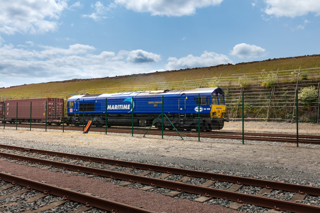
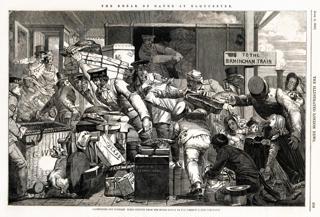
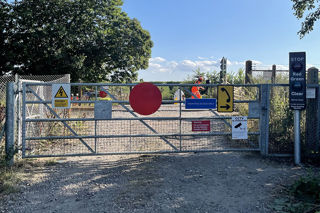
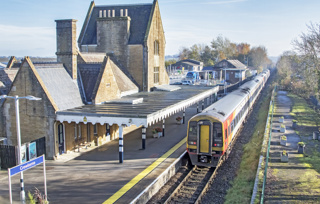
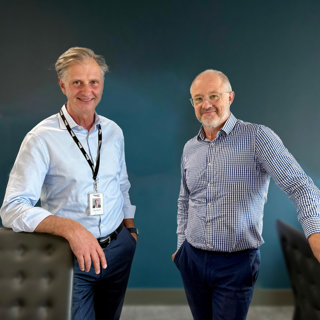

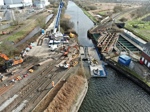







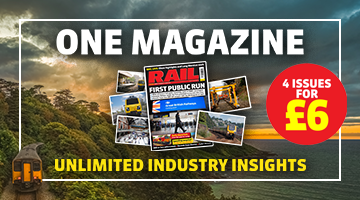

Login to comment
Comments
No comments have been made yet.